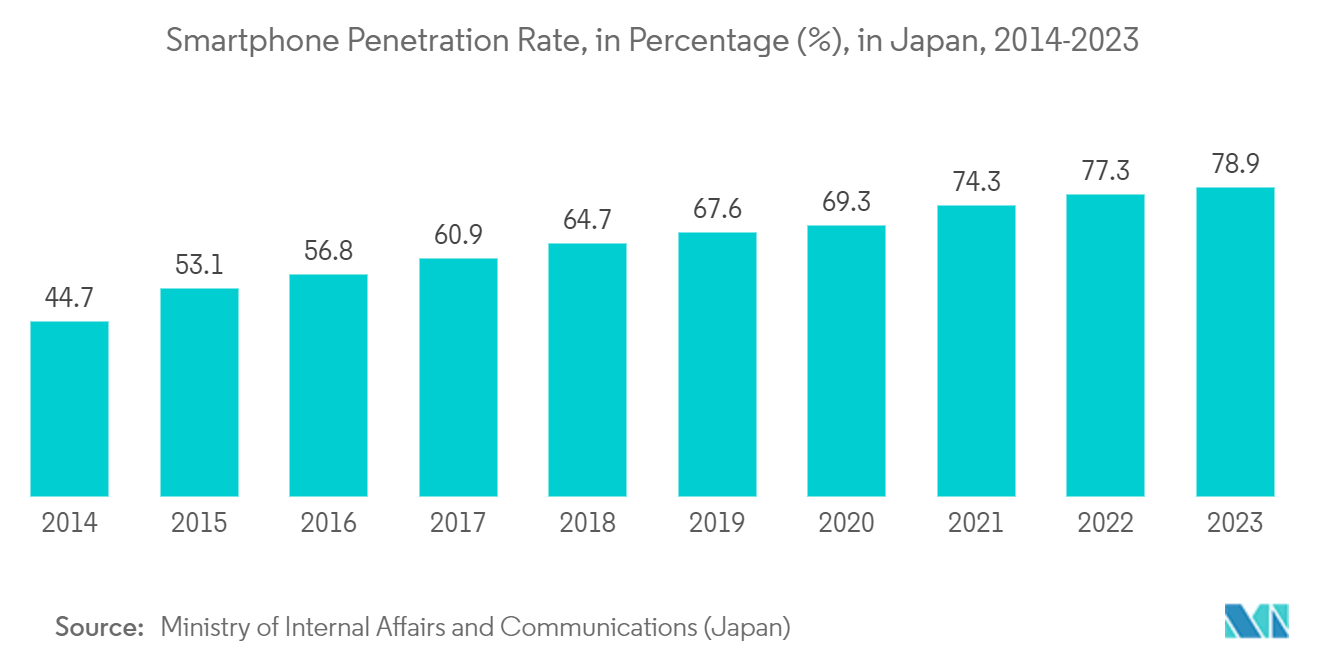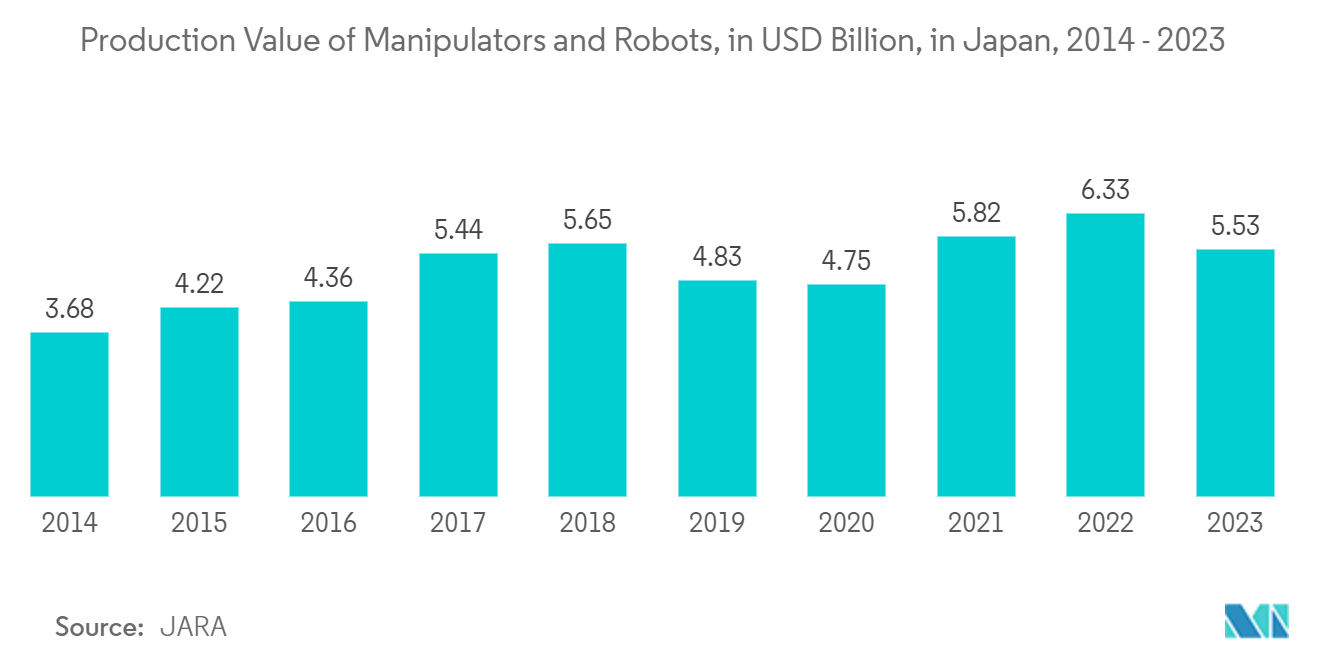Market Trends of Japan Integrated Circuit (IC) Industry
Memory Segment to Acquire a Significant Share After Logic
- Currently, DRAM is finding widespread use in digital electronics where low-cost and high-capacity memory is required. One of the largest applications for DRAM is the main memory in modern computers and graphics cards. It is also commonly used in many portable devices and video game consoles.
- Though Japan is still at an early stage in its 5G deployment, since the start of 2021, its mobile operators have been accelerating their 5G rollout. For instance, SoftBank aimed to deploy over 50,000 5G base stations and targeted 90% population coverage by the end of March 2022. Similarly, NTT Docomo aims to cover 90% of the Japanese population by March 2024, up from its previous goal of 80%.
- With the implementation of 5G, mobile devices will require more and faster DRAM, such as LPDDR5, to handle 5G-enabled multimedia applications and tasks. Also, the increased download speed and volumes associated with 5G will drive the need for faster and larger storage.
- A NAND flash chip retains data even when a device is turned off, unlike a DRAM chip which loses data when the power is off. NAND flash memories are becoming more popular due to their usage as solid-state drives (SSDs) and USB flash drives, called flash storage devices. Also, due to work-from-home trends, NAND flash consumption dramatically increased with the demand for PCs and smartphones.
- Moreover, in July 2022, Micron Technology announced that it had started shipping its most advanced NAND flash chip, which comprises 232 layers of memory cells that can support intense data use from consumer gadgets, cars, and data centers.

Industrial Application to Grow at a Significant Rate
- Industry 4.0 is transforming the way companies manufacture their products. Industry 4.0 refers to smart and connected production systems designed to sense, predict, or interact with the physical world to make decisions that support production in real-time. It can potentially increase productivity, energy efficiency, and sustainability in manufacturing.
- According to JARA, In 2023, Japan's production of manipulators and robots was valued at about JPY 891.56 billion (USD 5.51 billion) , marking a 12.7% decrease from the previous year. The country manufactured approximately 220.58 thousand units during this period.
- Integrated circuits are used extensively in robots and their controllers. For instance, memory components form the core elements of every industrial robot. Memory chips play an essential role in the controller and sensor functionalities and data logging embedded in the robotic solutions for different industries.
- Moreover, analog and mixed-signal ICs play important roles in industrial automation and process control applications. In response to the growing needs of industrial system developers, in recent times, analog ICs vendors have continued to roll out new chips designed to meet a range of industrial design needs, including factory robotics, sensors for machine condition monitoring, and advanced motor systems.
- Also, the Connected Industries strategy was launched in Japan to promote smart factories. Consequently, the Connected Industries Tax System (IoT Tax System) was established to offer financial support for the introduction of systems, sensors, robots, and other equipment needed to improve productivity through data collaboration and utilization, which also helps to drive the market demand from the sector in the country.


